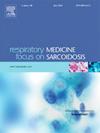Inhalers or nebulisation of salbutamol in childhood asthma exacerbations in emergency departments
IF 3.5
3区 医学
Q2 CARDIAC & CARDIOVASCULAR SYSTEMS
引用次数: 0
Abstract
Purpose
Asthma exacerbations often lead to paediatric emergency department (PED) visits, but evidence for paediatric management remains limited, and recommendations under discussion. This study compared salbutamol delivered via nebulisation and pressurised metered dose inhalers (pMDI) with a holding chamber in children with mild to severe asthma exacerbations.
Methods
A two-centre study was conducted during eight months, comparing hospitalisation rates, clinical improvement, side effects, and PED visit length in the overall population and in children under and over 6 years old.
Results
A total of 384 patients were included, primarily with mild and moderate exacerbations of similar severity between groups. The discharge rate was comparable between groups in the overall population (82.7 % without any nebulisation in the pMDI group versus 81.6 %, p = 0.93), but higher for children under 6 years old treated with pMDI (98.1 % versus 76.9 %, p < 0.001). The pMDI group exhibited significantly lower hospitalisation rates (p < 0.001) and shorter PED visits (1.7 [1.2–2.6] hours versus 4.0 [2.6–5.3] hours, p < 0.001) while receiving lower salbutamol doses (0.10 [0.05–0.16] mg/kg versus 0.81 [0.55–1.18] mg/kg, p < 0.001) with less ipratropium and oral corticosteroids (p < 0.001 and p < 0.001). The pMDI group demonstrated fewer side effects, particularly oxygen dependence, especially in children under 6 (p < 0.001).
Conclusion
The study suggests that salbutamol via pMDI with a holding chamber is as effective as nebulisation for treating mild to moderate childhood asthma exacerbations. This approach results in fewer hospitalisations, reduced side effects, and shorter PED visits. Educating patients on pMDI use and efficacy could further decrease emergency visits for asthma exacerbation.
吸入或雾化沙丁胺醇在儿童哮喘急诊科加重。
目的:哮喘恶化经常导致儿科急诊科(PED)就诊,但儿科治疗的证据仍然有限,建议正在讨论中。这项研究比较了沙丁胺醇通过雾化和加压计量吸入器(pMDI)与保持室在轻度至重度哮喘发作儿童中的应用。方法:一项为期8个月的双中心研究,比较了总体人群以及6岁以下和6岁以上儿童的住院率、临床改善、副作用和PED就诊时间。结果:共纳入384例患者,主要为轻度和中度加重,组间严重程度相似。在总体人群中,两组间的出院率相当(pMDI组无雾化治疗的出院率为82.7%,p=0.93),但pMDI治疗的6岁以下儿童的出院率更高(98.1%比76.9%,p=0.93)。结论:研究表明,在治疗轻中度儿童哮喘加重时,经pMDI加持室的沙丁胺醇与雾化治疗同样有效。这种方法减少了住院次数,减少了副作用,缩短了PED就诊时间。教育患者pMDI的使用和疗效可以进一步减少哮喘加重的急诊就诊。
本文章由计算机程序翻译,如有差异,请以英文原文为准。
求助全文
约1分钟内获得全文
求助全文
来源期刊

Respiratory medicine
医学-呼吸系统
CiteScore
7.50
自引率
0.00%
发文量
199
审稿时长
38 days
期刊介绍:
Respiratory Medicine is an internationally-renowned journal devoted to the rapid publication of clinically-relevant respiratory medicine research. It combines cutting-edge original research with state-of-the-art reviews dealing with all aspects of respiratory diseases and therapeutic interventions. Topics include adult and paediatric medicine, epidemiology, immunology and cell biology, physiology, occupational disorders, and the role of allergens and pollutants.
Respiratory Medicine is increasingly the journal of choice for publication of phased trial work, commenting on effectiveness, dosage and methods of action.
 求助内容:
求助内容: 应助结果提醒方式:
应助结果提醒方式:


